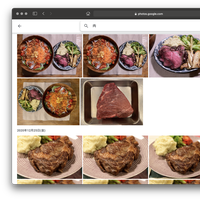
While you might be used to hassle free and smooth Mac OS X upgrades there still can be surprises. One such surprise I had after upgrading to Mac OS X 'El Capitan', 10.11.3. The secure notes in the keychain access app would no longer accept the keychain password to unveil their content. Guess what, those secure notes store important data.
A mouse gestures suite for Mac OS X. You can define gestures for individual programs, or for the whole computer, and map them to useful functions like closing or minimizing windows, switching or launc.
Due to not having the time to actively develop it anymore, xGestures is now freeware. Thanks to all of the people who paid for the application previously and supported me over the years! XGestures180.dmg Version 1.80. Xgestures is a gesture recognition program for X11 desktops. One may use it to perform various operations like minimizing and killing windows.

Brian Kendall has released an updated version of xGestures for Snow Leopard, which allows you to drive your Mac with “mouse gestures”—a particular combination of mouse movements that triggers a menu item, keystroke, or AppleScript. For example, I’m constantly hitting the wrong function key on my MacBook when I try to view all Spaces; with xGestures, I can hold the control key and flick up and down on my trackpad, and xGestures will zip me into the all Spaces view. Users of recent MacBooks with multi-touch trackpads may also want to check out Macworld’s recent review of Jitouch, which does similar things with multi-touch gestures.
xGestures installs as a preference pane and, unlike Jitouch, you have to define all of your gestures from scratch. Getting started with xGestures was a bit frustrating; you have make sure that “Enable xGestures” is checked under Options and then click the “Start xGestures” button on the same pane.
xGestures requires a mouse button or keyboard press to start listening. I used the Control-Shift keys along with “hold down key while gesturing” since this combination doesn’t conflict with any of my other utilities. The Command or Option keys, though, could easily trigger a gesture when I don’t wish to. You can also set xGestures to change the mouse pointer and draw a line on the screen when it’s active, both of which I recommend for testing out the software.
Once you’re set up, you can define either global gestures or specific gestures for each application. For my testing, I made my Spaces actions global, but I set up different gestures for Web-browsing which were specific to Safari. xGestures provides a drop-down menu of actions which a gesture can trigger; the most useful of these are probably “Perform Keystroke” and “Choose Menu Item.” (Note: to assign a keystroke, you may need to turn it off first. Assigning F8 to my Spaces gesture didn’t work so long as Spaces was intercepting it.) Be sure to click on “Apply Settings” whenever you set up a new gesture—skipping this led to some frustrating moments during my testing.
Gestures Definition
xGestures requires Mac OS X 10.3 or higher, and costs $5 after a 15-day free demonstration period. I’m on the fence about it, but if I find myself using gestures frequently in two weeks, the price makes this a no-brainer purchase.
